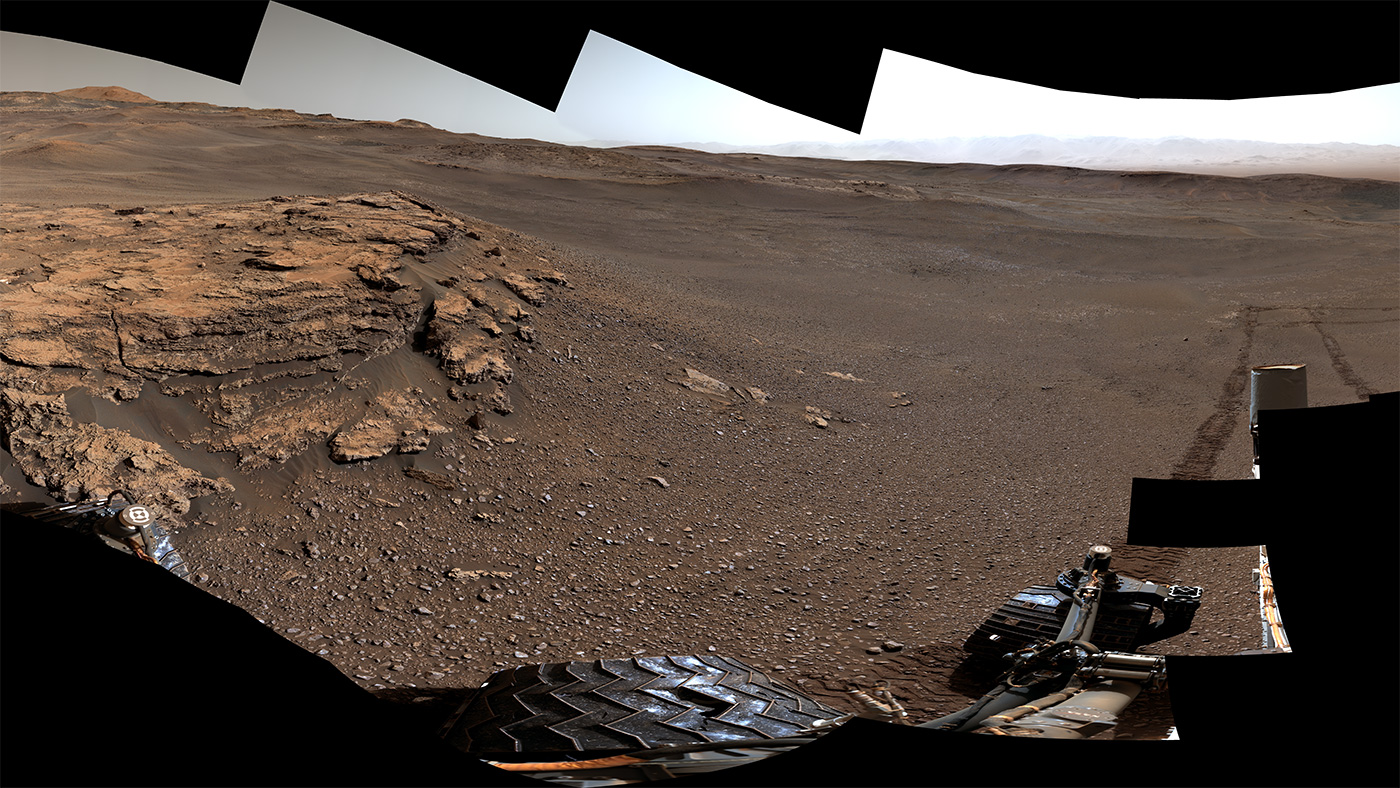NASA's Curiosity Rover Still Learning After 7 Years on Mars
It's been seven years since NASA's Curiosity rover touched down on Mars, but the robot geologist is still tackling big questions about Red Planet rocks.
Most recently, Curiosity has been focused on a region scientists call the "clay-bearing unit," which is located on the side of Mount Sharp, a peak nestled inside of Gale Crater. As the name suggests, the rock here is full of clay, which forms in wet areas. That's why scientists are so intrigued by the rock: They believe Curiosity's analysis will help them understand the environment here billions of years ago, when Mars was wet and perhaps more habitable.
"This area is one of the reasons we came to Gale Crater," Kristen Bennett, a planetary scientist at the U.S. Geological Survey and one of the co-leads for Curiosity's clay-unit campaign, said in a statement. "We've been studying orbiter images of this area for 10 years, and we're finally able to take a look up close."
Related: Amazing Mars Photos by NASA's Curiosity Rover (Latest Images)
Since touching down on Mars in August 2012, Curiosity has traveled 13 miles (21 kilometers). The leisurely pace has let the robot drill 22 samples of the Red Planet, among plenty of other science tasks.
But Curiosity's current location is particularly intriguing to scientists because of all that clay. "We're seeing an evolution in the ancient lake environment recorded in these rocks," Valerie Fox, a planetary scientist at Caltech and the other co-lead of the current Curiosity campaign, said in the same statement. "It wasn't just a static lake. It's helping us move from a simplistic view of Mars going from wet to dry. Instead of a linear process, the history of water was more complicated."

On its way to its current outpost, the rover first passed over what Fox called a "parking lot full of gravel and pebbles," which were too small for Curiosity to manage to drill for closer inspection. Then, in June, the rover passed into what NASA calls more complex geologic features, including an outcrop nicknamed Teal Ridge and a large boulder nicknamed Strathdon, which appears layered.
Get the Space.com Newsletter
Breaking space news, the latest updates on rocket launches, skywatching events and more!
According to NASA, Curiosity should have enough power to keep exploring for a few more years.
- Photos: Spectacular Mars Vistas by NASA's Curiosity Rover
- Curiosity Rover on Mars Spotted from Space in Awesome NASA Photo
- Curiosity Rover Snaps Gorgeous Panoramic Selfie on Mars Mountain (Photo)
Email Meghan Bartels at mbartels@space.com or follow her @meghanbartels. Follow us on Twitter @Spacedotcom and on Facebook.
Join our Space Forums to keep talking space on the latest missions, night sky and more! And if you have a news tip, correction or comment, let us know at: community@space.com.

Meghan is a senior writer at Space.com and has more than five years' experience as a science journalist based in New York City. She joined Space.com in July 2018, with previous writing published in outlets including Newsweek and Audubon. Meghan earned an MA in science journalism from New York University and a BA in classics from Georgetown University, and in her free time she enjoys reading and visiting museums. Follow her on Twitter at @meghanbartels.









